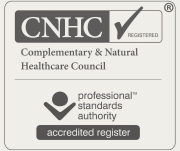DIABETES
Type 2 diabetes is the most common form of diabetes caused by insulin resistance.

Insulin is produced by the pancreas in response to the amount of sugar, carbohydrates, and starches that we eat. Insulin helps our body to take up the glucose (sugar) into the cells to be used for energy. If high blood sugar continues for many years, then there is a lot of pressure on the pancreas to produce insulin and several things can happen; the pancreas can slow down and stop producing insulin and the receptor sites on the cells stop ‘hearing’ the signals for insulin. With high levels of glucose in the blood, unable to enter the cells then a situation called ‘hyperglycaemia’ occurs that can cause long-term damage to the cardiovascular system, circulation, kidneys, eyes and nerves.
Type 1 diabetes is an autoimmune condition where the pancreas has been attacked by the body’s own immune system with the result that the pancreas is unable to produce enough insulin to mange blood sugar levels. Type 1 diabetes can often occur in childhood (juvenile diabetes) usually before 20 years old. It can rarely be reversed but diet and lifestyle changes can help to manage the dependence on insulin injections.
Symptoms of diabetes:
- Sweet smelling urine and or breath
- Excessive urination and thirst
- Weakness and fatigue
- Issues with concentration and memory
- Blurred vision
- Slow healing of cuts and infections.
- Numbness in extremities
- Alterations in weight
What causes diabetes?
- Standard western diet
- Genetics
- Obesity
- Inactivity
- High levels of stress
- Family history of diabetes and / or cardiovascular issues
- Toxins, viruses and chemical exposure
- Certain medications
Conventional Approach
Usually through blood tests diabetes or pre-diabetes is diagnosed. Usually, a medication is given that increases insulin sensitivity and insulin production and some general advice around losing weight and doing more exercise with follow up blood tests in a few months’ time. However, medication can have its own side effects, and nothing has really changed that caused the situation in the first place meaning that medications often have to be increased with time. Sometimes insulin needs to be used to manage the situation in type 2 diabetes.
Things you can do:
- Cut out sugar and avoid food with a high glycaemic load. Sugar spikes blood glucose levels which can contribute to insulin resistance. Foods that have a high glycaemic load get converted into sugar more quickly that low glycaemic foods. Choose foods like non-starchy vegetables, berries, nuts, sees, avocado, organic meat and wild fish and eggs.
- Avoid alcohol. Alcohol can increase blood sugar levels and cause toxicity to the liver. Beer and wine especially should be avoided.
- Eat food high in fibre – fibre slows down the absorption of glucose to help regulate your blood sugar levels. Aim for 30g a day. High fibre foods include vegetables like green beans, peas and artichokes, berries, nuts, and seeds especially flaxseeds and chia seeds.
- Exercise regularly. Increases cell receptor sensitivity to hearing insulin to help the blood glucose be taken up by the cells.
What can Functional Medicine do to support?
- Personalised dietary plan to help you regulate blood sugar levels.
- Supplements and herbs to assist with blood sugar levels.
- Lifestyle suggestions including exercise which is vital to control blood sugar levels.
5 Pillars of Functional Medicine

Managing Stress
Chronic stress can lead to an increased risk for many diseases through
suppression of the immune system. Lets find ways to manage stress and to
nurture, to calm, to re-set and restore the immune and nervous system.

Sleep
Sleep is the first like of defence against infectious disease. Getting good quality
sleep is restorative and preventative. We’ll work together to ensure you have
a good sleep routine and get a least 7 – 9hrs restful sleep a night.

Nutrition
Food is our medicine; it tells us what genes to switch on or off, it gives the cells
the nutrients that the body needs to function and provides the energy that we
need to lead an enriched life. Here, we’re all about enjoying food for life.

Relationships
Toxicity is not just about chemicals and pesticides; toxicity can come from
relationships and can affect our physical and mental health and well-being.
We’re all for healthy relationships that help us to thrive and grow as human beings.

Exercise
Lack of exercise is the primary cause of most chronic diseases and also accelerates ageing.
Exercising can prevent or delay the onset of chronic disease and it supports
better sleep, assists in weight control, improves mood and boosts energy.
Diabetes and Functional Medicine
Do you suffer from diabetes and have tried all the usual approaches?
Functional Medicine can help you, simply book an online consultation or arrange a free 15 minute discovery call and find out how we can help.





